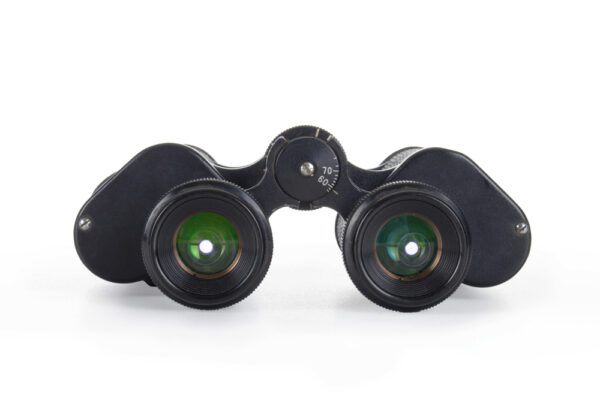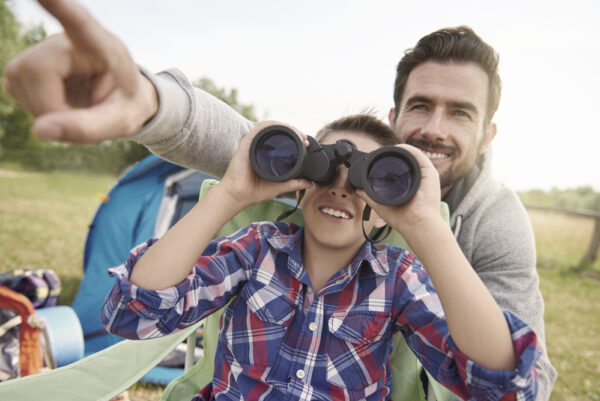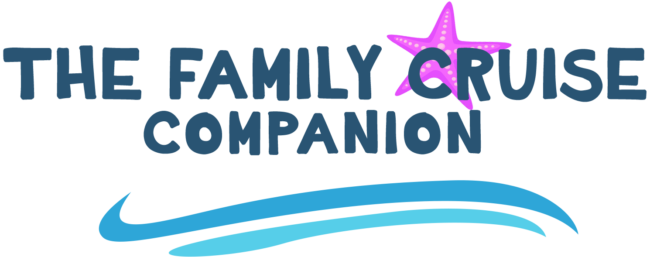Are you considering buying a pair of binoculars for upcoming travels but are concerned that you don’t quite know what you’re doing? Wondering what the numbers on binoculars mean or what specifications even matter? If so, you’re not alone.
Sometimes binoculars can seem like a complicated piece of equipment, with a bunch of numbers and symbols that may not make sense at first glance. But fear not! Keep reading below, where we will demystify the numbers and help you understand what they mean. Find out exactly what you need to know to choose the right pair for you and your travels.

What Do The Numbers On Binoculars Mean?
The numbers on binoculars contain key information about the particular pair of binoculars you intend to purchase. This information is critical in deciding what’s the right pair of binoculars suited to your needs.
You will see numbers such as 8×40 or 10×32. These are pronounced as eight by forty or ten by thirty-two.
The first number you see indicates the power of magnification. This means that binoculars with an 8x or 10x magnification will see objects eight times or ten times closer than they are, respectively. The higher the magnification power, the closer the objects will appear through the binocular lenses.
The second number on binoculars is known as the objective lens diameter, and this number indicates how much light the lenses can gather, as well as the physical size of the binoculars.
Binoculars are categorized according to three sizes, based on the sizes of their objective lenses (the second number). These sizes are as follows:
- Compact-size binoculars: Objective lenses are less than 30 mm.
- Mid-size binoculars: Objective lenses range from 30 -40mm.
- Full-size binoculars: Objective lenses are greater than 40mm.
A compact-sized pair of binoculars are lightweight, small, and ideal to be packed into a backpack or small bag. Mid-size models are comfortable enough to be held for long periods and produce more precise, brighter images. However, full-size binoculars can be too bulky or heavy to hold for extended periods.
Therefore, the numbers printed on the binoculars supply you with vital information that affects the comfort you will encounter when using them and how good your binoculars will be when viewing objects at distances.
Other Key Specifications To Consider When Buying Binoculars
There are a few other binocular features that you should consider when contemplating the purchase of binoculars. Particularly if you are focused on using them for specific activities, like an upcoming Alaska cruise.
Field of View (FoV)
The field of view is defined as how much area you can view at once when looking through binoculars at a distance of 1000 yards (or meters). In the U.S., it is typically expressed as feet at 1000 yards or in degrees. The numbers may be in meters rather than yards in other parts of the world.
A wider field of view means you can see more of the surrounding area, making it easier to spot birds or other objects. For every 0.5° increase in the field of view, you’ll see about 8% more area, which can add up to a significant difference. However, the stated field of view is a best-case scenario, and you may see less if your eyes are far from the eyepiece or if you wear glasses.
Magnification power directly affects your field of view in that a higher magnification will narrow your view. In contrast, a lower magnification would expand your view.
As for the diameter of the lenses and your field of view, the bigger the lens, the smaller the field of view will be. In contrast, a larger field of view will be achieved with smaller lenses.

Exit Pupil Number
The exit pupil on binoculars is the diameter of the beam of light that exits from the eyepiece of the binoculars. You see it in the center of each eyepiece when you hold the binoculars away from yours and point toward a bright light. The size of the exit pupil determines how much light is available to your eye and how bright the image will appear. A larger exit pupil means more light and a brighter image. In most instances, the exit pupil number only matters if you use the binoculars in low light conditions.
The exit pupil number depicts how bright images appear through binoculars. A higher number would result in better viewing in low-light settings and brighter images. The exit pupil number also affects the clarity of images when binoculars are not held steady.
The value of the exit pupil is determined by dividing the power of magnification by the diameter of the objective lens. For example, binoculars with an 8x magnification and an objective lens diameter of 42 will provide an exit pupil number of 5.25mm. This indicates the size of the shaft of light that reaches your eyes.
An exit pupil number of more than 4mm or more is recommended for night viewing (low-light situations). Binoculars with a high exit number make dawn, dusk, or dense areas easier to view.
Eye Relief Number
The eye relief number on binoculars is helpful to be aware of, particularly if you wear glasses. It indicates how far away from the eyepiece your eyes can be while providing an entire field of view that the binoculars provide. If you wear glasses, opt for an ideal long eye relief of at least 15mm.
Most binoculars have adjustable eyepieces that can be lengthened or shortened as needed.
Close Focus
The close focus number tells you the minimum distance the binoculars need to focus. A close focus of 15 feet would indicate that you can achieve a perfect focus on an object as close as 15 feet to you.
Understanding Binocular Specifications Before Purchasing
As shown by the information above, the specifications you need for binoculars will depend on the most likely scenario in which they will be used.
Selecting the best pair of binoculars to fit your needs will result in crystal clear and precise images every time. Review the table below to see what binocular magnification powers and lens diameters are specific to the type of activity you may wish to participate.
Specifications for different uses
| ACTIVITY | MAGNIFICATION POWER | LENS DIAMETER |
| Stargazing | 10x | 42, 50 |
| Concerts/Shows | 3x, 4x, 8x | 20, 25, 28 |
| Sports Events | 6x, 7x, 8x, 10x, 12x | 25, 28, 32, 42 |
| Kayaking/Paddling | 7x, 8x, 10x | 32, 42, 50 |
| Viewing Wildlife | 8x, 10x | 32, 42 |
| Whale Watching | 8x, 10x | 32, 42 |
| Hunting Trips | 7x, 8x, 10x | 40, 42, 50 |
| Hiking Adventures | 8x, 10x | 25, 28 |
| Bird Watching | 8x, 10x | 32, 42, 50 |
Let’s outline a few examples from the information shown above:
- Stargazing: Full-size binoculars are designed to gather light while maximizing features adequately. If you use magnification greater than 10×42 or 10×50, a tripod may be needed to hold the binoculars firmly.
- Kayaking/Paddling: When it comes to being near water, binoculars with a lower magnification, such as an eight or less, would be more suitable.
Higher magnification binoculars may make viewing problematic as these binoculars are heavier, resulting in an unsteady hand. A good choice would be an 8×32 size and a waterproof model too.
- Hunting and whale watching: One would generally be further away from larger, more dangerous animals such as whales and other animals in the wild, and therefore using binoculars with a higher magnification would be a more sensible choice.
Water-resistance binoculars are always advisable, but waterproof models are recommended when viewing animals from a boat rather than the land.
- Hiking expeditions: Due to the nature of hiking and backpacking, a compact set of binoculars would be your best “go-to” pair, as their size and weight are ideal for this type of activity. Look for more durable, compact, weather-resistant models such as binoculars with rubber coatings, etc.
- Bird watching: Mid-size and full-size models are among the most popular choices for bird watchers. Typically, size and weight aren’t as much of an issue as carrying a pair of binoculars with you on a hike, long walk, etc.
A magnification of 10 is ideal for looking at small animals such as birds, whereas a magnification of 8 will provide a wider field of view for successfully locating birds. Opt for anti-fog models, as these prove to be helpful when moving from warm vehicles to colder outdoor temperatures.
What Is The Best Magnification For Binoculars?
When it comes to selecting specifications for binoculars, many times, people just want a shortcut answer and want to know what is generally considered the best magnification for binoculars. Are we able to single out any one pair? An 8-power pair of binoculars will provide a wider field of view, whereas a 10-power pair lets you get a closer, more detailed look.
The most common multi-purpose binoculars have a magnification power of 8 and 10. These two particular magnification powers provide a wide field of view and an excellent light-gathering capacity, all in a light and compact package.
Magnification powers greater than 12 are often bulkier and heavier, making them challenging to hold still without a tripod.
It all boils down to personal preference and intentions of use.

What About Binoculars For Kids?
Having only one pair of binoculars can be rather trying if you are with the whole family on vacation. Luckily, finding an appropriate size for your child is a pretty simple task and comes with reasonable prices too.
As with anything, there’s never a “one size fits all,” and your child’s specific age and interests will guide you to pick the most appropriate pair for their needs.
The size and weight of binoculars are always the first consideration, as children will struggle to manipulate a heavy, bulky pair of binos and may feel frustrated with a pair that is too large for their hands and face.
Also, with younger children, optical quality is less of a concern than durability. A pair of binoculars with a wider field of view will also be more practical because it provides more opportunity for actually spotting the time your child wants to see.
A suggestion is to purchase a lower magnification power, such as 7x or 4x, depending on the child’s age. This will offer the child a wide field of view and help them to view images easily. An ideal choice will be relatively inexpensive with a manageable auto/toggle focus rather than a wheel focus. The chart below highlights some popular binoculars that are specifically made for kids.
- BRAND NAME: Scotamalone.It is a great playground accessory .such as :exploring , indoor playing, backyard sports activity, camping, safari, traveling, bird watching, spying, car trip, summer vacation and so on . It can improve the explore...
- BEST GIFT - The Pocket sized is fit for child .It can be adjusted to fit any eye distance . It has a adjustment knob for children`s eyes. It was made with a soft touch rubber, 4x30mm Adjustable Binoculars for Kids, Quality For The Price
- SPARK MORE EXPLORATION! Discover the world with science & exploration toys designed just for kids to get up close with nature, peer into outer space, and get smart about science
- THE ONLY BINOCULARS DESIGNED FOR KIDS: Kid-sized binoculars are focus-free and feature large comfy eyepieces—more than 3 times the size of ordinary eyepieces; Built kid tough and designed to last for years
- 15x25 Binoculars for adults and kids.With 15x magnification and 25mm objective lens, Our binoculars provide a view field of 399t/1200yds,ensuring every detail is crystal clear.
- Binoculars with BAK-4 Prism and FMC film lens,which minimizes the loss of light due to reflection.You can easily get bright, contrast images, with non-chromatic aberration.
- 【HIGH-POWERED LARGE EYEPIECE BINOCULARS】 This binoculars for adults has 12x magnification, 25mm objective lens and wide field of view, 273ft/1000yds, letting you look farther and see wider. Coating with FMC Broadband coating and premium...
- 【ADJUSTABLE EYE CUPS FIT EYEGLASS WEARERS OR NOT】The binocs can be pull down the rubber eyepieces and more fit the glasses wearer, getting close to lens and see easily. The long eye relief combined with large eyepiece give you a...
- 【SPARK CURIOSITY & OUTDOOR ADVENTURE】 Give your young explorer a crystal-clear view of the world! Our 4x power magnification and easy-adjust focus wheel allow kids to sharpen the image on everything from nearby birds to far-off...
- 【4X ZOOM BINOCULARS TOYS】 See the world in stunning detail! Unlike basic fixed-focus binoculars, our 4x magnification and easy-adjust focus wheel allow young adventurers to get a sharp, close-up view of everything from a nearby...
Closing Thoughts
Understanding the numbers on binoculars is essential for choosing the right pair for your needs and making the most of your outdoor experiences. By knowing what the magnification, objective lens size, and field of view numbers mean, you can make an informed decision and avoid disappointment or frustration. We hope the tips above help you can become a confident and knowledgeable binocular user. So grab your binoculars, head outside, and start exploring the world around you!
Keep up with the latest cruise tips and insights! Follow us on Pinterest:
Last update on 2026-01-06 / Affiliate links / Images from Amazon Product Advertising API
